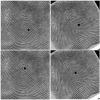Free Online Productivity Tools
i2Speak
i2Symbol
i2OCR
iTex2Img
iWeb2Print
iWeb2Shot
i2Type
iPdf2Split
iPdf2Merge
i2Bopomofo
i2Arabic
i2Style
i2Image
i2PDF
iLatex2Rtf
Sci2ools
ICIP
2003
IEEE
2003
IEEE
Improved fingercode for filterbank-based fingerprint matching
FingerCode has been shown to be an effective representation to capture both the local and global information in a fingerprint. However, the performance of FingerCode is influenced by the reference point detection process, and the AAD features cannot fully extract the discriminating information in fingerprints. In this paper, we first propose a new rotation-invariant reference point location method, and then combine the direction features with the AAD features to form an oriented FingerCode. Experiments conducted on a large fingerprint database (NIST-4) show that the proposed method produces a much improved matching performance.
AAD Features | ICIP 2003 | Image Processing | Large Fingerprint Database | Point Location Method | Reference Point Detection |
| Added | 24 Oct 2009 |
| Updated | 27 Oct 2009 |
| Type | Conference |
| Year | 2003 |
| Where | ICIP |
| Authors | Lifeng Sha, Feng Zhao, Xiaoou Tang |
Comments (0)

